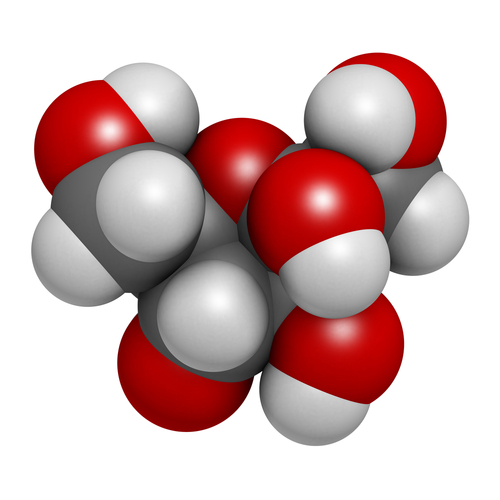Short answer
Fructose is not harmful when consumed naturally through foods, such as fresh fruit or honey. It is still a sugar, though, and should be consumed in moderation (2-3 pieces of fruit per day). Processed Fructose (High Fructose Corn Syrup) turns a natural sweetener into a chemically ridden poison and should be avoided.
Long answer
We often hear of the term “fructose,” especially in the context of “High Fructose Corn Syrup,” but what we do not hear is what exactly fructose is, and whether or not it is good for our bodies. When reaching for your favorite sweet snack here is something to consider.
The simplest way to define fructose is that it is a type of sugar. It is part of the macronutrient group called carbohydrates and is the type of sugar we find in fruit and honey. It is the component that makes natural foods sweet. Although this makes fructose seem relatively harmless, the true problem it poses lies in how much is consumed. Fructose has a few different ways of getting into in our body including:
- When we eat raw fruit.
- When it is combined with another type of sugar called glucose and forms sucrose, which we know as cane sugar, or table sugar.
- In the form of High Fructose Corn Syrup (HFCS), which is another derivative of fructose, and is a highly processed to be sweeter and cheaper than traditional sugar. HFCS makes up a large amount of the added sugar found in foods in the supermarket, and the method of creating it introduces many chemical contaminants including chloralkali (which contains mercury).
Most experts agree that regardless of the type of sugar we consume, major problems arise when we begin consuming more sugar than our bodies need. In the past, the only type of sugar that people consumed, included small portions of fructose, or other natural sugars-- through seasonal fruit and occasionally honey. With the introduction of processing food, we have been able to make sugar a commodity.
Therefore, the problem with fructose is not necessarily that it is harmful to our bodies in its true form, but it can have devastating effects when we consume it in mass quantities or in chemically altered forms, as we have become accustomed to. Our fructose consumption is at an all-time high, and while our bodies are perfectly capable of metabolizing small amounts, we begin to see drastic effects with excessive intake.
Fructose is metabolized by the liver only, which mean our bodies are not using it for fuel. It is considered ‘excess sugar’, causing our bodies to store it as fat. Fructose has also been shown to contribute to fatty liver disease, inflammation, kidney stones, increased risk for heart disease, and obesity.
The American Heart Association recommends that daily sugar intake not exceed 6-9 teaspoons of sugar a day, however, the latest research shows that Americans are consuming about 21 teaspoons of sugar a day, not including the sugar found in fruit, like fructose. This paints a picture of how addicted to sugar we truly are.
While fructose itself in natural resources is not going to produce any long-term damage-- eating it in excess and combined with other types of sugar is what puts us at major risk. The most important thing you can do when consuming fructose is to limit your quantities.
Go ahead and reach for that apple or a little honey in your smoothie—but put down the ‘fruit juice’ and cereals loaded with HFCS!
Possible short-term side effects
- sugar high and low (especially in combination with other sugars)
- hyperactivity (especially in combination with other sugars)
Possible long-term side effects
- obesity
- liver problems
- hypertension
- metabolic syndrome
- kidney stones
Commonly found in
- fruit
- fruit juice
- honey
- agave nectar
- maple syrup
- high fructose corn syrup
- molasses
Ingredients to be aware of
- chemical additives to fructose
- other types of sugar added

 Approved by
Approved by 















